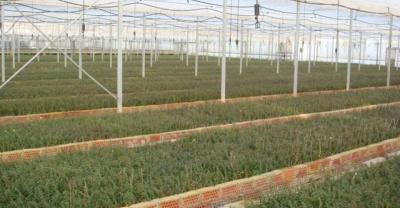What aquatic plants can be planted in crab ponds?
As the saying goes: "crab size, look at water plants", river crabs like to live in an ecological environment with abundant aquatic plants, fresh water quality, sufficient dissolved oxygen and rich biological bait. Production practice has proved that the quality of aquatic grass cultivation is closely related to the effect of river crab culture. therefore, the cultivation technology of aquatic grass is also one of the key technologies for the success or failure of river crab culture.
The function of planting aquatic plants in crab ponds: aquatic plants are one of the important sources of bait for river crabs; aquatic plants are indispensable places for river crabs to perch, hide, molt, shade and cool; aquatic plants can purify, stabilize water quality and improve sediment. At the same time, it can stabilize the settlement of river crabs and reduce escape.
The species of aquatic plants planted in crab ponds are commonly seen in production at present, such as verticillium verticillata, Eloe verticillata, bitter grass, water peanut and so on. All kinds of aquatic plants have their own different characteristics, such as verticillium verticillata has high temperature resistance, crab like to eat, fast growth, strong regeneration ability (can take root after being cut off by river crab), verticillium verticillata leaves are tender, less cellulose, is the best plant food for river crab. Elorella also has the characteristics of strong adaptability, high yield, river crab like to eat, etc. At the same time, Elorella has the characteristics of non-decay in winter and evergreen all the year round, and compared with bitter grass and verticillium verticillata, it has significantly higher nutritional content, strong absorption of nitrogen and phosphorus, and good effect of water purification. The disadvantage of Elodea is that it is not resistant to high temperature, and it is easy to rot when the water temperature is above 30 ℃ for a long time. Sophora flavescens, also known as flat basil grass and noodle grass, is a typical submerged plant, and it is also one of the high-quality aquatic plants that river crabs like to eat. The pond where Sophora flavescens is planted should remove the residual grass floating on the water surface every day so as not to deteriorate the water quality and affect the photosynthesis of the aquatic grass at the bottom of the pond. Alternanthera philoxeroides (alternanthera philoxeroides) is a kind of aquatic and terrestrial plant with strong vitality, fast branching and many roots. It is also an aquatic plant favored by river crabs. It is one of the most aquatic plants planted in crab ponds in Chongming area. Because of its strong vitality and fecundity, improper management can easily lead to bad water color and bad water quality, and the body color of river crabs living in water peanut ponds is not as good as that of Eloe algae, verticillium verticillata and bitter grass ponds. In short, farmers can plant aquatic plants scientifically and reasonably according to the actual situation, so as to give full play to the advantages and functions of different aquatic plants.
- Prev

Several Green Plants Not Suitable for Indoor Planting
Many times because I like flowers, I will move a lot of plants to my home. As everyone knows, some plants are poisonous. Once I touch them, the consequences may be...
- Next

The difference between wild Panax notoginseng and artificial planting
The difference between wild Panax notoginseng and greenhouse Panax notoginseng: 1. The leaf and stem flowers of Panax notoginseng and wild Panax notoginseng are similar. 2, the root is different, wild Panax notoginseng root long strip, greenhouse planting Panax notoginseng fist.
Related
- Fuxing push coffee new agricultural production and marketing class: lack of small-scale processing plants
- Jujube rice field leisure farm deep ploughing Yilan for five years to create a space for organic food and play
- Nongyu Farm-A trial of organic papaya for brave women with advanced technology
- Four points for attention in the prevention and control of diseases and insect pests of edible fungi
- How to add nutrient solution to Edible Fungi
- Is there any good way to control edible fungus mites?
- Open Inoculation Technology of Edible Fungi
- Is there any clever way to use fertilizer for edible fungus in winter?
- What agents are used to kill the pathogens of edible fungi in the mushroom shed?
- Rapid drying of Edible Fungi

